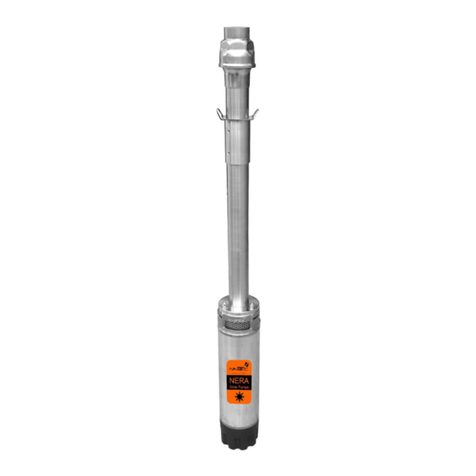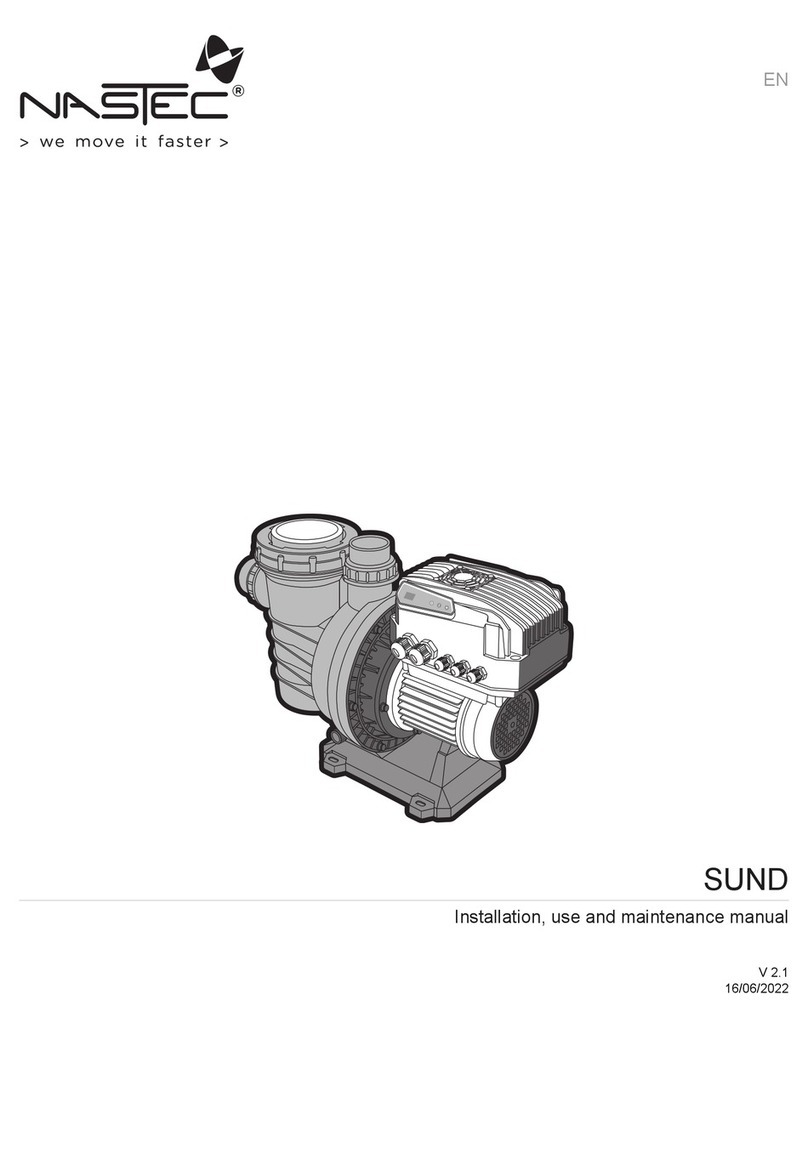
2
Index
1. Introduction of the 4HS submersible pumps range..................................................................................................3
2. Safety Instructions ....................................................................................................................................................4
3. Stocking conditions ...................................................................................................................................................4
4. Packing content......................................................................................................................................................... 5
5. General technical features....................................................................................................................................5
6. Pump installation ......................................................................................................................................................6
6.1 Installing pump in the well................................................................................................................................ 6
6.2 Pump cable........................................................................................................................................................ 7
7 CM installation ..........................................................................................................................................................8
7.1 Electric wiring....................................................................................................................................................9
8. 4HS pumps installation for constant pressure mode..............................................................................................10
8.1 Pressure tank ..................................................................................................................................................11
8.2 Pressure sensor...............................................................................................................................................11
8.3 Minimum stop frequency at 0 delivery (f min Q=0) during constant pressure control..................................12
9. 4HS pumps performance range ..............................................................................................................................13
10. 4HS use and programming..................................................................................................................................16
10.1 Display.............................................................................................................................................................16
10.2 Initial setting ...................................................................................................................................................16
10.3 Initial view.......................................................................................................................................................18
10.4 Menu display...................................................................................................................................................19
10.5 Installer parameters........................................................................................................................................19
10.6 Advanced parameters.....................................................................................................................................24
11. Protections and alarms ...................................................................................................................................27
12. Trouble-shooting chart .......................................................................................................................................30
13. Technical Assistance ...........................................................................................................................................31































